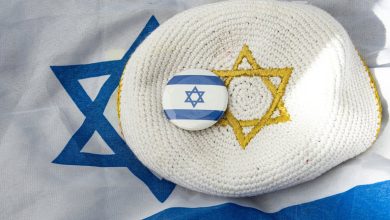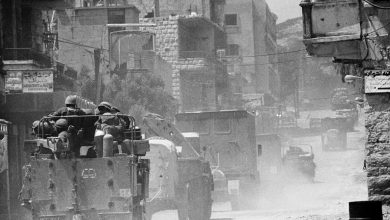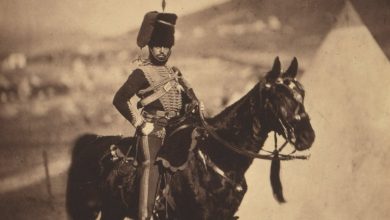new first world war memorial in Washington revitalises classic image of the ‘American doughboy’

مجلة المذنب نت متابعات عالمية:
America’s inaugural national memorial marking the first world war was unveiled this month in Washington DC, on the birthday of war commander General John J. Pershing – 106 years after the end of the war. We don’t often get to see a new memorial to a century-old war, especially one that has been deliberately designed in a century-old style.
Its sculptor, Sabin Howard – who was recently referred to as a “self-appointed bulwark against the scourge of modern art” – rejects the vogue for abstract commemorative art seen in memorials such as Maya Lin’s Vietnam Veterans Memorial (1982). The centrepiece of the new memorial is Howard’s 58-foot panoramic sculpture, A Soldier’s Journey. Five connected scenes tell the story of an American everyman who enlists as a volunteer, fights in Europe, then returns home.
The 38 realist figures were painstakingly sculpted from costumed models before being cast in 25 tonnes of weather-resistant bronze. Howard wanted to “tell a story” about the first world war and how it affected Americans, to make the conflict more visible to viewers today and in the future.
In an episode of Cheers from 1983, when a first world war veteran comes into the bar, Coach asks: “Is that the war with Clark Gable or Gary Cooper?” I’m not sure American knowledge of the war has come much further in the past 40 years.
In every other participating nation, the centenary of the war was marked by a pageant of commemorative activity – think of the 5 million people who went to see the ceramic poppies at the Tower of London. But in the US, despite having a culture of venerating veterans, the first world war is notoriously a “forgotten” war. It tends to be overshadowed by the civil war on one side, and the second world war on the other.
Perhaps this blindspot is because the American experience of the first world war was much shorter. For the US, it lasted just 19 months from the declaration of war in April 1917 to the signing of the armistice in November 1918. And the fighting – as the song goes – was “over there” rather than on the home front, as it was in Europe. American losses, although high at 116,516 men (plus several hundred women who lost their lives while serving as nurses), were much lower than those of European nations. Britain, for example, lost 880,000 servicemen – 6% of the adult male population at the time.
But the role this war played in the development of the “American century” is incomparable. The first world war destabilised the European powers – already in imperial decline – to the extent that the US grew to become the pre-eminent financial and military power after the war.
The sacred and the dead
The first world war hasn’t always been forgotten in the US. Indeed, in the 1920s and ’30s, American commemoration of the war was at its most “supercharged”, as scholar Steven Trout has shown. The Tomb of the Unknown Soldier in Arlington National Cemetery, Virginia, was interred in 1921 – a commemorative form borrowed from Europe after the first “unknowns” were interred in London and Paris in November 1920.
Arlington is now the site for national memory of all wars, woven into the fabric of US political life. The recent controversy over a confrontation between Donald Trump staffers and cemetery officials demonstrates its continuing role in ensuring the sacred place of war dead in American culture.
Across the nation, Americans have sought to remember their war dead in myriad forms, including memorial halls, parkways, plazas, opera houses, arches, gymnasiums, parks, trees and bell towers. There were so many memorials erected in New York City in the 1920s and ’30s – including parks, sculptures and the planting of memorial trees – that after the second world war, New York City’s commissioner for parks and recreation, Robert Moses, effectively banned new monuments being built, considering them “monstrosities”.
Many memorials are still peppered across America, hidden in plain sight but instantly recognisable, even if viewers don’t know the context. The Spirit of the American Doughboy, designed by sculptor E.M. Viquesney and copyrighted in 1920, features a “doughboy” (recruit) holding his rifle with fixed bayonet and a grenade in his other hand – deliberately echoing the Statue of Liberty.
Rosemarie Mosteller/Shutterstock
Advertised as an affordable tribute that could be bought by towns as their local memorial, there are currently 135 originals and replicas on public display across the US. I find it impossible not to think of those doughboys when I look at the soldiers in Howard’s memorial.
Commentators may well criticise Howard’s figurative sculpture as old-fashioned, but the debate over appropriate memorial forms and the question of “taste” is not new. In fact, it was a very live debate in the first world war’s immediate aftermath.
In attempting to correct the historical omission of a national memorial, it seems appropriate that Howard’s figurative sculpture looks like – and recalls – first world war sculpture of the time.
Will it earn the war its place in American memory that it deserves? I’m not sure. But in giving old form to an old war, it will make it visible to generations of Americans unfamiliar with it – and help the rest of us remember it anew.
نشكركم على قراءة المنشور عبر مجلة المذنب نت, المتخصصة في التداول والعملات الرقمية والمشفرة















